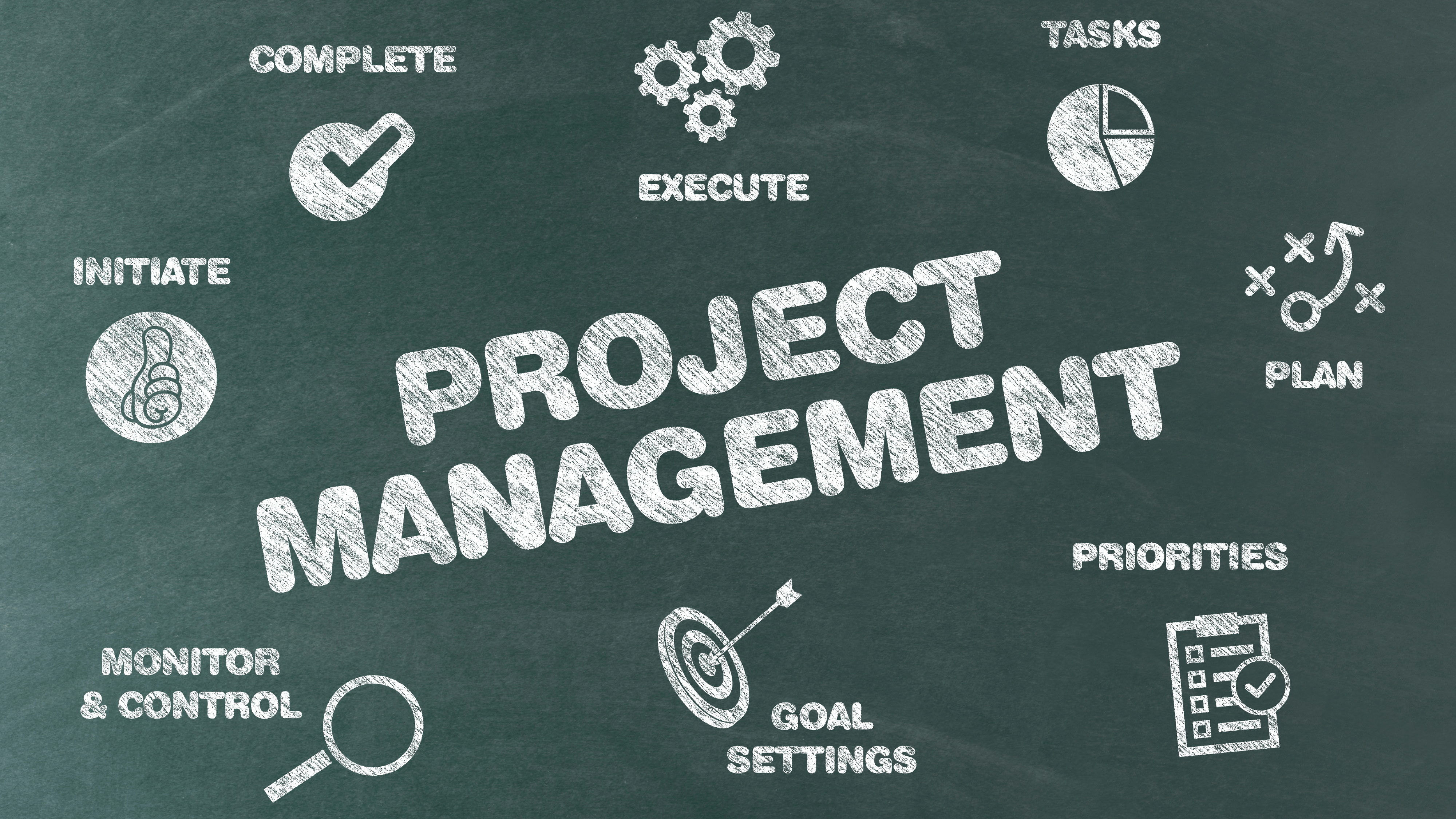
When Managing Projects In-House No Longer Works
With projects growing more complex, timelines getting tighter, and business environments evolving rapidly, organizations often find themselves struggling to manage initiatives using only internal resources. Even with capable in-house teams, the pressure to innovate and deliver simultaneously can create bottlenecks, inefficiencies, or burnout. This is where outsourcing project management services enters the conversation; not as a stopgap, but as a strategic advantage. By bringing in external project management talent, companies can bridge capability gaps, speed up execution, and reduce the risks that come with poorly managed initiatives.
Outsourcing project management doesn’t mean giving up control but gaining clarity. With the right model, you maintain strategic direction while external experts handle the execution framework. Below, we explore the core reasons businesses choose to outsource project management in the first place.
Why Businesses Are Turning to Project Management Outsourcing
The decision to outsource project management is typically born from a combination of necessity and opportunity. For many businesses, it starts with realizing that their internal teams are stretched too thin or lack the specialized skills needed for complex, fast-moving projects. Hiring a full-time project manager is one solution, but that requires a lengthy recruitment process, overhead costs, and a longer ramp-up period. Businesses today use outsourcing to add agility, bring in hard-to-find skills, and get results faster than internal teams alone might allow.
• Faster speed-to-execution
External project managers are onboarded specifically for speed. With proven methodologies, tools, and templates, they eliminate the delays that come with hiring, onboarding, and training internal talent.
• Access to specialized expertise
Many outsourced PMs are certified in methodologies like Agile, Scrum, or PRINCE2 and have deep experience in niche industries such as IT, construction, or healthcare. This level of specialization is difficult and costly to build in-house.
• More scalable resources
Businesses can quickly scale project teams up or down depending on workload. This flexibility is particularly helpful when managing multiple concurrent initiatives or when facing seasonal or market-based fluctuations.
• Improved objectivity and perspective
Outsourced teams bring a fresh lens to your projects. They’re not tied to internal politics or legacy processes, making them more likely to identify blind spots, recommend improvements, and keep everyone accountable.
What to Outsource and What to Keep In-House
Not all project tasks are created equal, and outsourcing project management doesn’t mean outsourcing everything. Knowing which parts of project management to outsource and which to retain can make or break your success. The goal is to keep strategic leadership close to home while offloading repeatable, process-heavy functions to experienced professionals.
Best Tasks to Outsource
These are tasks that require technical knowledge and consistency but don’t depend on deep organizational context.
• Project planning and scheduling
Includes building timelines, creating work breakdown structures (WBS), and setting milestones. External PMs can create detailed plans using industry best practices.
• Cost management and tracking
From creating budgets to managing cost variances, outsourced professionals ensure financial discipline while helping to avoid overruns.
• Risk assessment and quality controlto Experts
They can identify risks early, plan mitigation strategies, and establish quality checks without disrupting the internal team’s workflow.
• Status reporting and metrics
They handle stakeholder reporting, performance dashboards, and real-time project visibility, ensuring alignment and transparency.
• Project management tool administration
Managing platforms like MS Project, JIRA, or Asana can be outsourced to specialists who ensure efficient use and accurate data capture.
• Project closure and documentation
External PMs can wrap up engagements with structured lessons-learned sessions, audits, and handover documentation, making sure value is retained post-project.
Tasks to Keep Internal
These activities benefit from insider knowledge, leadership authority, and company-specific insight.
• Project kickoff and stakeholder alignment
Critical for communicating goals, vision, and organizational context. Requires internal champions to set the tone.
• Daily team leadership and decision-making
Project direction, personnel management, and approvals should remain under internal leadership to ensure accountability.
• Internal stakeholder engagement
Relationship-building, managing expectations, and political navigation work best when handled by those embedded in the company culture.
• Executive sign-offs and governance
Final approvals, risk tolerance decisions, and investment calls must stay in-house to maintain ownership.
Outsourcing Models: Which One Fits Your Business?

Outsourced project management services can be delivered in several models: each suited to different types of businesses and goals. Choosing the right one depends on the complexity of your projects, your team’s bandwidth, and how integrated you want the external team to be.
The Embedded Model involves placing external project managers directly within your internal teams. They attend your meetings, use your tools, and follow your company’s processes. This model works well when you need additional hands-on execution help for short-term or high-urgency projects. Because they’re fully integrated, embedded PMs can align quickly with your goals and team dynamics.
In contrast, the Remote PMO Model offers an offsite project team or center of excellence that supports multiple projects remotely. They operate in their own environment but connect via dashboards, meetings, and reporting. This model is best for organizations that run numerous, repeatable projects and want to reduce costs without sacrificing visibility or control.
Then there’s the PMO-as-a-Service Model, a hybrid solution where an external team provides not just execution but also governance, methodology oversight, and strategic planning. These providers often help build or improve internal project management capabilities while still executing key initiatives. This model works well for companies scaling quickly or undergoing digital or organizational transformation.
Before choosing a model, assess your internal maturity. Do you already have project governance structures in place? If so, a lighter embedded model might work. If not, a full-service PMO-as-a-Service might deliver more value, acting as both a capability-builder and execution partner.
What You Gain and What to Watch Out For
The benefits of outsourcing project management are well-documented, but they’re not guaranteed. While speed and scale are tempting, it’s equally important to consider the risks and how to mitigate them.
Key Benefits
- Accelerated delivery
Pre-vetted professionals get projects running faster, often reducing cycle times significantly. - Better resource allocation
Internal teams focus on innovation, strategy, and core business functions while execution is handled externally. - Enhanced reporting and governance
Outsourced PMs bring data-driven dashboards and objective insights, which support better decision-making at all levels. - Cost control and predictability
Outsourcing provides clear billing structures, allowing organizations to manage budgets more effectively and avoid scope creep.
Potential Risks
- Misalignment in goals
If expectations aren’t aligned upfront, even well-executed projects can miss the mark. Prevent this by co-creating objectives and roadmaps from day one. - Security or IP exposure
Sensitive data can be at risk without NDAs, secure systems, and access controls in place. Ensure your provider follows compliance standards like ISO 27001 or SOC 2. - Dependency on external vendors
Over-reliance on one provider can pose continuity risks. Mitigate this by ensuring knowledge transfer and documenting key processes internally. - Hidden costs or scope creep
Vague statements of work (SOWs) can lead to overruns. Clearly define deliverables, timelines, and escalation paths in the contract.
How to Successfully Implement Outsourced PM
Implementing an outsourced project management solution is not as simple as signing a contract. It requires careful planning, onboarding, and governance. It works best when treated as a structured change, not an ad hoc fix. Here’s a practical roadmap to getting it right.
• Assess your internal gaps
Identify bottlenecks, skill gaps, or overworked functions in your current team. Is the issue capacity, capability, or both?
• Select the right model
Choose embedded PMs for short-term, high-collaboration projects. Consider a remote PMO for multiple standard projects, and a PMO-as-a-Service model if you need strategic and execution-level support.
• Choose a provider carefully
Look for experience, references, industry knowledge, and tool fluency. Assess their ability to understand your business, not just manage tasks.
• Set clear success metrics
Define what “done” looks like—on-time delivery, stakeholder satisfaction, cost variance, or post-project ROI. Build these into your SOW.
• Establish governance
Agree on check-ins, status updates, issue escalation processes, and performance reviews. Empower both sides to raise flags early.
• Plan for integration
Give your outsourced PM access to relevant systems, communication channels, and project history. Treat them as a partner, not a vendor.

Conclusion
Outsourcing project management services doesn’t mean removing accountability. It means amplifying your team’s ability to deliver. With the right setup, it’s possible to gain faster results, specialized expertise, and tighter control over complex initiatives, all without overwhelming internal teams. Whether you’re tackling a digital transformation, rolling out a new product, or managing global programs, an outsourced project management strategy can be the edge that your business needs.
But success requires more than signing a contract. It takes alignment, structure, and trust. Start small. Scale what works. And always keep a clear line between execution support and strategic leadership.
Ready to scale your PM capability? Let Guided Outsourcing build your hybrid project delivery model together. Book a free consultation today.

